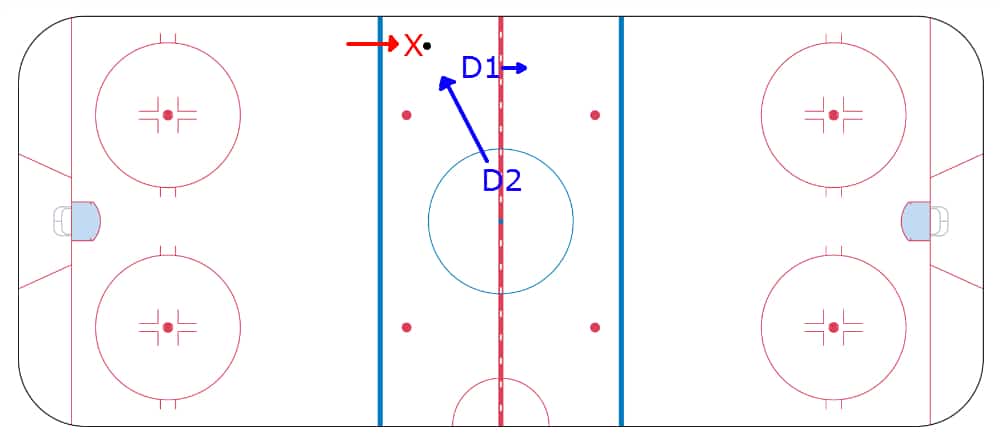One common mistake I see is allowing the opposition free access to your own end. The specific situation I am referring to is a forward carrying the puck out of their end with no support and all the way through the neutral zone into the offensive zone (one example is a 1 on 2). I watch the defenseman continue to skate backwards and maintain their gap, just watching the puck carrier. The defensemen only pressure the puck carrier once they have crossed the blue line. By this time, the rest of the opposing team has caught up to the play and can support the puck carrier to establish possession. I’ve seen this countless times and it drives me crazy since it is so easy to deal with. Teams cannot afford to allow free access into their own end, goals against happen that way! This situation needs to be stopped in the neutral zone by the defensemen. With one simple play, two defensemen can prevent access into the defensive end, steal the puck, and transition to offense.
This specific situation occurs when the team breaking out has fewer players in the neutral zone than the defending team. The most common occurrences of this are a 1 on 2, or a 2 on 3.
If it is a 1 on 2, the weak side defenseman needs to identify the situation and then skate in towards the puck carrier to angle him/her off while the strong side defenseman maintains his/her gap. This will close off space from the puck carrier and force a dump or enable the weak side defenseman to get a hit or strip the puck. If the situation is a two on three, it works exactly the same way but the weak side defenseman needs to be confident that the backchecking forward can cover the non-puck carrier before starting to angle off the puck carrier. The reason this play works so well is because the strong side defenseman is able to maintain strong defensive positioning while the weak side defenseman pressures the puck carrier. The weak side defenseman isn’t covering anyone in these scenarios so they are essentially a spare body which can be activated as a checker.
The primary benefit of this play is that you don’t allow free passage into the defensive end and time for the opposition’s forwards to catch up and establish possession. The secondary benefit is that it can generate offense since this situation often occurs when the other team is changing. If done quickly, this can lead to a quick transition and offensive chance with the other team out of position due to their line change.
Keep an eye out for this situation next time you are watching your children’s game or even coaching. You will undoubtedly see it, and now you will know what to teach your children or players to deal with it in the best way.
